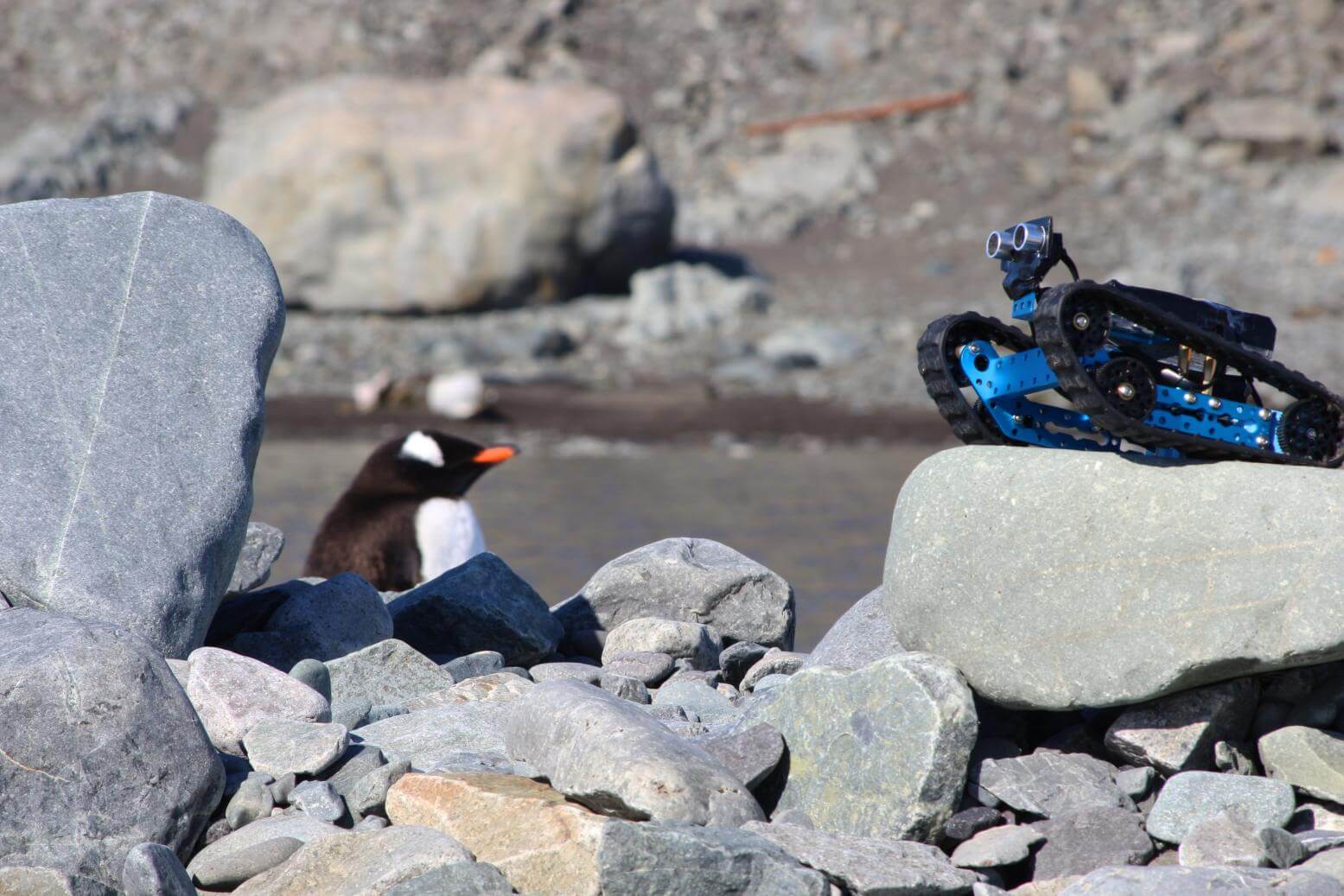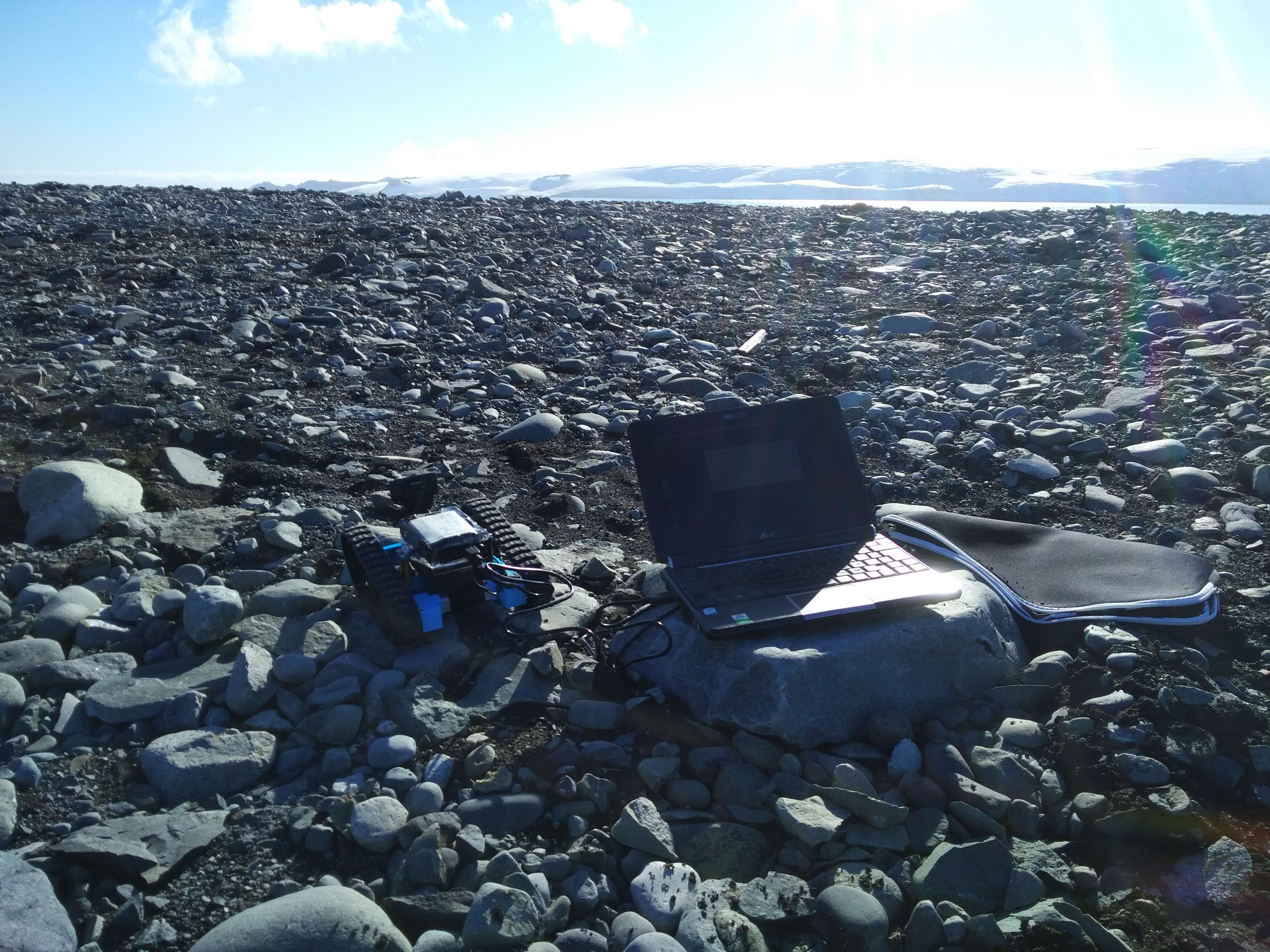
Nuno Sidónio Andrade Pereira is an Adjunct Professor of the Mathematics and Physical Sciences Department of the Polytechnic Institute of Beja in Beja, Portugal, and initiator of the Antarctic Research & Education Program (AREP). AREP takes places at St. Kliment Ohridski, as a collaboration between the Bulgarian Antarctic Institute, Sofia University St. Kliment Ohridski, and the Physics and Instrumentation Laboratory of the Polytechnic Institute of Beja, Portugal. This first edition of the program consists of two parts: ViRAL – Virtual Reality Antarctic Laboratory, and Antarctuino – Physical Computing with Arduino in Antarctica. Antarctuino aims the development of programming competences with Makeblock’s mBot Ranger robotics platform and Arduino, the open source software platform, engaging educators and students in project based learning in the framework of physical computing in extreme environments. Both projects will increase public awareness on Antarctica related issues, such as global warming, and the importance of research, and monitoring in this region of the Planet.
We asked Nuno to tell us more about his project and its results after coming back from the first expedition.
Hi Nuno! Please introduce yourself to our readers. What made you interested in robotics?
I studied physics in university and completed an MSc in Mathematical Physics during which I applied computer simulation to celestial mechanics. I’ve worked in cryptography, using chaos theory, then went into renewable energy for four years, and got back to my previous field to work on computational astrophysics for 3 years. Since 1996, I’ve been teaching at the Polytechnic Institute of Beja, and for the past three years, I teach a course on Physical Computing where I use the Arduino hardware platform. I’m an Isaac Asimov’s fan (in fact I’m reading the book “The Complete Robot” for the second time 🙂 ). I played with “plastic blocks” when I was a kid, building space ships and robots, now I still play with robots, but in a different context.
Please describe this project: What are you doing, where, how, and why?
This is a STEM education project in Antarctica based on robotics, and Virtual Reality (VR), but, at the same time, we want to take this opportunity to engage students and educators in other subjects like environment, and wildlife protection. I usually say that we want to take Antarctica to the classroom with VR, and to take the classroom to Antarctica with robotics. What happens in Antarctica, in one way or another, will affect us all, sooner or later. We must engage society, in particular, the new generations, in the discussion of this problems, and increase global awareness to the challenges of sustainable development.

How did the idea about the Antarctica expedition come about?
My friends João Rocha, and Ludmila Filipova, had been in Antarctica before and challenged me to have an idea for an Antarctic project. This was in the end of 2016. I was starting to be interested in VR and teaching the course on Physical Computing so it didn’t take long to link both subjects to Antarctica. The project started to be “designed” in March 2017, was presented in June to the Bulgarian Antarctic Institute (that manages the Bulgarian Antarctic Base, in Livingston), and in September was accepted for the 2017-18 campaign. During that year I came across the mBot when I attended a robotics workshop (thanks to my colleague Carlos from CEAN), and I really enjoyed the robot, and the fact that it uses both hardware and software platforms that are open (Arduino and Scratch). After a few minutes of web surfing I found the Makeblock web page, and the mBot Ranger. At that moment, I decided to include robotics in the project, and the Ranger would be the ideal candidate for the task. After that, I got in contact with Makeblock, and the robotics project came to live.

How did you utilize mBot Ranger during the expedition?
The Ranger was used by the students and educators of the four schools (two in Portugal and two in Bulgaria) that participated in this first edition of the project. The student teams assembled and programmed the robots. Then we took five robots (one from each school, and one from my Institute) to the base in Antarctica to perform a set of tests: moving in rocky terrain, snow, low temperature and snowing, wind, and eventually a bit of mud too :-). We didn’t know how the Ranger would perform. There could be problems due to the humidity, snow, the batteries could freeze… The fact is that the performance was great, we manage to accomplish everything that was planned, and even more! The Ranger proved to be an excellent platform for this project. In fact, I plan to use it in the next campaign.
What did the students learn by going on this expedition and working with mBot Ranger?
This is a STEM program. With the robotics project students had contact with mechanics (assembling the robot), computer science (installing software, programming the robots), physics (using sensors), mathematics and logic (decisions based on the input of sensors). Besides that, they had to work in teams, developing skills like cooperation, and problem solving. These are skills are as important as the technical skills for their future, no matter what field they’ll be working.
Why did you choose the mBot Series over other products on the market?
The mBot, and in particular the Ranger, has some very important characteristics that made it an excellent candidate: robustness (aluminum chassis), tracks (in the off-road Land Raider configuration, important for the snow), an accessible programming language for students (Scratch based), an open hardware platform (its Arduino compatible), availability of several sensors in the platform (for temperature, light, sound, distance, attitude), the possibility of controlling and programming the robot with a smart phone, and last but not least, it’s cool 🙂

How do you see the impact of robotics on the future of education?
My answer is biased because I do like robotics. When we consider the skills that we can develop when working with robots, and the applicability of robots to fields like medicine, agriculture, art, Antarctica exploration, space exploration… it’s hard to find a field were robots cannot give a positive contribute, and I see them as a tool that will allow educators and students to have a different, and from my point of view much more engaging, teaching-learning experience. Moreover, robotics is an ideal tool for project-based learning, which I believe to be a very efficient way of teaching and learning, that it’s being adopted in different learning contexts. Having said that, I think that in the near future we will see a lot more robots in the classrooms.